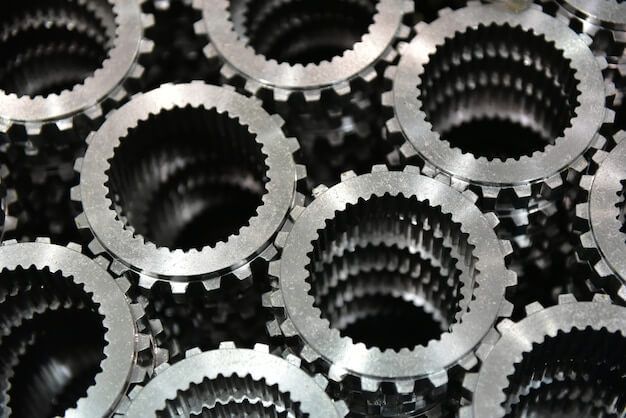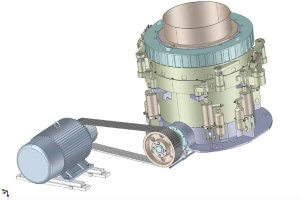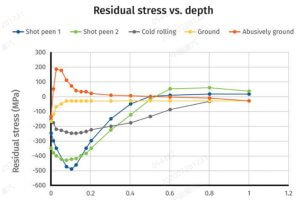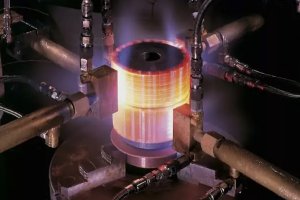Introduction to 3D Printing and the Importance of Materials
The advent of 3D printing technology has revolutionized various industries by enabling rapid, flexible, and customized production. For beginners who are new to this fascinating world, 3D printing, also known as additive manufacturing, involves creating three-dimensional objects from digital blueprints, layer by layer. The material plays a crucial role in determining the object’s final characteristics such as strength, flexibility, durability, and appearance.
- ABS Plastic: Acrylonitrile Butadiene Styrene (ABS) is a popular choice due to its high strength, flexibility, and resistance to heat and impact.
- Nylon: As another viable option, Nylon offers superior flexibility, lightweight properties, and strong resistivity against abrasion and chemicals.
In essence, by meticulously choosing between materials like ABS plastic and nylon, users can significantly influence their 3D printed object’s features to fit specific requirements or functions, thereby unleashing the full potential of 3D printing.
Understanding ABS Plastic for 3D Printing
The Acrylonitrile Butadiene Styrene (ABS) plastic is known for its robust thermoplastic polymer properties. Excelling in resistance to wear and high-temperature, it forms an ideal choice for many 3D printing applications. When employed for 3D printing objects like protective helmets or Lego blocks, ABS has shown superior durability and flexibility.
- One significant benefit of using ABS plastic in 3D printing lies in its ability to create sturdy and long-lasting items without compromising on their structural integrity.
- A potential drawback of ABS could be that the heated material tends to emit fumes containing volatile organic compounds, requiring proper ventilation during the printing process, which may not always be possible.
Taking into account these strengths and limitations, one can determine if ABS meets their specific requirements when diving into a new 3D printing project.
Exploring Nylon for 3D Printing
Nylon is a highly versatile thermoplastic material, extensively used in the realm of 3D printing. It exhibits high strength, durability and flexibility which makes it an ideal choice for fabricating functional parts or mechanical components.
- Fundamental attributes: Known for its aggressive interlayer adhesion, Nylon can withstand substantial stress while maintaining dimensional stability. Its great permeability to moisture requires careful storage practices but endows longer shelf life compared to many other printable materials. Other key properties include resistance against chemical attack and abrasion and low coefficient of friction.
- Main advantages: The real power of Nylon lies in its impressive mix of stiffness and flexibility, enabling users to print robust yet lightweight designs. An exemplary instance would be the production of drone propellers using 3D printed nylon due to its resilience under sudden impact or torque. Also, Nylon’s smooth surface finish provides aesthetic appeal without compromising functionality or lifespan.
- Potential downsides: While these benefits certainly make Nylon a top-choice, one must factor in some drawbacks too. Specifically, Nylon tends to warp during cooling down process; hence proper bed adhesion techniques are required. Furthermore, this material absorbs water very quickly which could lead to degradation upon exposure unless kept in dry environment.
Please note that these insights should guide users on appropriate use-cases instead of generalizing Nylon as universally ‘good’ or ‘bad’. Every 3D printing project has unique requirements where trade-offs between various parameters may need to be considered.
In-depth Comparison between ABS Plastic and Nylon
When it comes to 3D printing materials, ABS plastic and Nylon are two popular choices. Let’s take a closer look at their properties and compare them in various aspects.
1. Material Properties
| Property | ABS Plastic | Nylon |
|---|---|---|
| Strength | High tensile strength, impact resistance | Good strength, flexibility |
| Heat Resistance | Can withstand moderate temperatures | Higher heat resistance than ABS |
| Chemical Resistance | Resistant to many chemicals | Resistant to oils, greases, and some chemicals |
| Printability | Relatively easy to print | Requires careful calibration and expertise |
2. Applications
- ABS Plastic: ABS is commonly used in rapid prototyping, automotive parts, electronic enclosures, and consumer products. Its strength and durability make it suitable for functional prototypes and end-use parts.
- Nylon: Nylon is often used in applications that require flexibility, such as flexible hinges, snap-fit parts, and wearable devices. It is also used in industrial applications where high strength and impact resistance are needed.
3. Printability and Post-Processing
ABS plastic is relatively easy to print and provides good layer adhesion. It can be sanded, painted, and glued after printing. On the other hand, Nylon requires careful calibration and expertise to achieve good print results. It has a tendency to warp, so a heated bed and an enclosed printer are recommended. Post-processing options for Nylon include sanding, dyeing, and polishing.
4. Cost
In terms of cost, ABS plastic is generally more affordable compared to Nylon. This makes ABS a popular choice for budget-conscious users or projects that require large quantities of prints.
5. Summary
In summary, ABS plastic and Nylon are both versatile materials for 3D printing, each with its own strengths and applications. ABS offers good strength, impact resistance, and ease of printing, making it suitable for functional prototypes and consumer products. Nylon, on the other hand, provides flexibility, high heat resistance, and excellent strength, making it ideal for applications that require durability and impact resistance.
ABS Plastic vs. Nylon: Usage Scenarios
While both ABS plastic and nylon are used in 3D printing, the decision to use one over the other is mainly determined by the specific needs of a project. For example, ABS plastic might be the superior choice when durability, strength, and high-temperature resistance are required due to its inherent qualities.
- Durability: ABS has a strong resistance to corrosive chemicals and physical impacts, which makes it suitable for products meant for rough handling or outdoor usage.
- Strength: ABS is highly durable with tensile, impact, and structural strength, ideal for items such as protective cases.
- High-Temperature Resistance: This feature makes ABS useful for objects that would travel through disciplinary conditions like automotive parts.
On the contrary, nylon could be more fitting where flexibility, low friction, and chemical resistance are sought after. Its inherent properties make it versatile to suit these situations.
- Flexibility: Nylon’s versatility can offer room for certain manipulations without breaking, which is favourable for objects like hinges.
- Low Friction: The material’s low frictional property makes it an excellent fit for mechanical components such as gears or bearings.
- Chemical Resistance: Nylon is resistant to many chemical compounds. When making containers or parts destined to come into contact with chemicals, this material rises above others.
Safety Concerns Related to ABS Plastic and Nylon in 3D Printing
When it comes to safety concerns, both ABS plastic and Nylon require special attention during the 3D printing process. For example, ABS or Acrylonitrile Butadiene Styrene, when heated for 3D printing emits fumes that are not healthy if inhaled over prolonged periods. This necessitates proper ventilation or a workspace setting featuring an enclosure with air filtration when working.
- Avoid direct inhalation of ABS fumes.
- Invest in appropriate workshop ventilation or air filtering systems.
On the other hand, nylon has its own share of challenges. While it doesn’t necessarily give off harmful fumes like ABS does, the fine dust from nylon powder can pose health risks if not managed properly. Accumulated particles can irritate the respiratory tract if inhaled and cause skin irritation as well.
- Ensure your work area is well-ventilated to minimize dust accumulation.
- Wear personal protective equipment (PPE) such as masks or goggles.
Conclusion: ABS Plastic vs. Nylon in 3D Printing
In summarizing the key similarities and differences between ABS plastic and nylon for 3D printing, it’s crucial to note that both materials offer unique properties, each with their advantages and potential drawbacks. While ABS offers ease of use, higher rigidity, resistance to heat, and cost-effectiveness, its notable downside is lower strength compared to nylon. On the other hand, nylon boasts superior strength, flexibility, and durability but at a higher cost and technical difficulty level. Both materials are suitable for creating durable parts, though ABS might be more ideal for models or prototypes due to its ease of handling.
- ABS – Cost Effective, Heat Resistant, Easy to handle but Lower Strength
- Nylon – Superior Strength and Durability, Higher Flexibility, More Difficult to Print and Pricier
The final choice largely depends on specific needs and scenarios. For hobbyists, beginners, or instances requiring easier control and lesser costs, ABS plastic would suffice. Conversely, professional applications demanding high-strength components might find nylon a fitting option despite its complexities and price.
Frequently Asked Questions
When starting out with 3D printing, beginners often have several common questions about using ABS plastic and nylon. One frequently asked question is “What are the main differences between ABS plastic and nylon for 3D printing?” Simply put, ABS tends to be more affordable and easier to print with but has a lower strength compared to Nylon which boasts superior durability and flexibility, making it suitable for mechanical parts. Yet, it requires higher temperatures to melt and can be trickier to manage in terms of warping or adhesion issues.
Another typical query is “What safety measures should I take when 3D printing with these materials?” For both materials, it’s crucial to operate in well-ventilated spaces since they release fumes during the printing process – ABS being notorious for its strong unpleasant odour. Lastly, users often ask, “Can I paint over my 3D prints made from ABS or nylon?”. In general, ABS objects can easily be painted over with acrylic paint after some light sanding. On the other hand, painting on Nylon might require specific types of paints and more preparation due to its smooth surface structure.
Other Articles You Might Enjoy
- ABS Plastic vs. Nylon: A Detailed 3D Printing Material Comparison
Introduction: The Importance of Material Selection in 3D Printing In the field of 3D printing, material selection plays a pivotal role in determining not only a product's aesthetic quality, but…
- ABS Plastic vs. Nylon: A Detailed 3D Printing Material Comparison
Introduction: ABS Plastic and Nylon as 3D Printing Materials In the realm of 3D printing, two high-quality materials stand out: Acrylonitrile Butadiene Styrene (ABS) plastic and Nylon. Both have established…
- Understanding 3D Printing: Processes, Benefits, and Uses
Introduction to 3D Printing Technology 3D printing, a transformative approach to manufacturing and prototyping, enables the creation of complex structures from digital blueprints by successively layering material until a three-dimensional…









